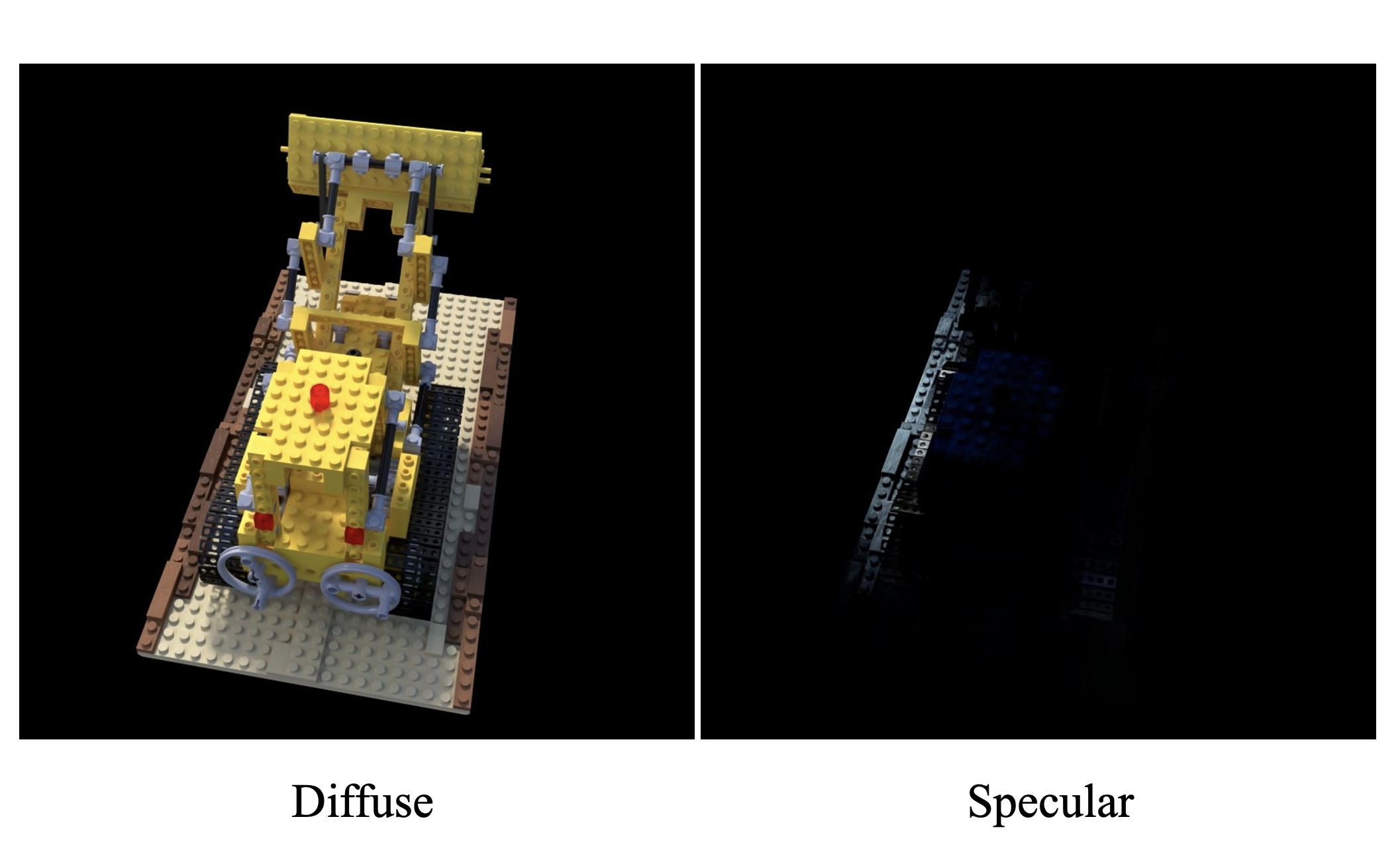This repository is merely an attempt to address the inability of 3D-GS to model specular accurately. I found that even in scenes like Lego, official 3D-GS struggles to model correct specular part. Therefore, I conducted some exploration into its modeling.
I consider Spherical Harmonics (SH) as a form of low-frequency filter. Naturally, SH generates low-frequency signals, making it less suitable for modeling high-frequency specular. As a result, I segmented the signal using SH to model the low-frequency components and employed Multi-Layer Perceptrons (MLP) for modeling the high-frequency components. The results can be observed in the Results.
I have made some extensions to the official diff-gaussian-rasterization, remember to clone the modified rasterization pipeline from my-repo
git clone https://github.com/ingra14m/Specular-Gaussians --recursive
cd Specular-Gaussians
conda env create --file environment.yml
conda activate gaussian_env
pip install imageio==2.27.0
pip install opencv-python
pip install imageio-ffmpegRendering
Diffuse and Specular
Thanks to the authors of 3D Gaussians for their excellent code, please consider cite this repository:
@Article{kerbl3Dgaussians,
author = {Kerbl, Bernhard and Kopanas, Georgios and Leimk{\"u}hler, Thomas and Drettakis, George},
title = {3D Gaussian Splatting for Real-Time Radiance Field Rendering},
journal = {ACM Transactions on Graphics},
number = {4},
volume = {42},
month = {July},
year = {2023},
url = {https://repo-sam.inria.fr/fungraph/3d-gaussian-splatting/}
}
If you find this implementation helpful, please consider to cite:
@misc{yang2023speculargs,
title={Specular-Gaussians},
author={Ziyi, Yang},
publisher = {GitHub},
journal = {GitHub repository},
howpublished={\url{https://github.com/ingra14m/Specular-Gaussians/}},
year={2023}
}

